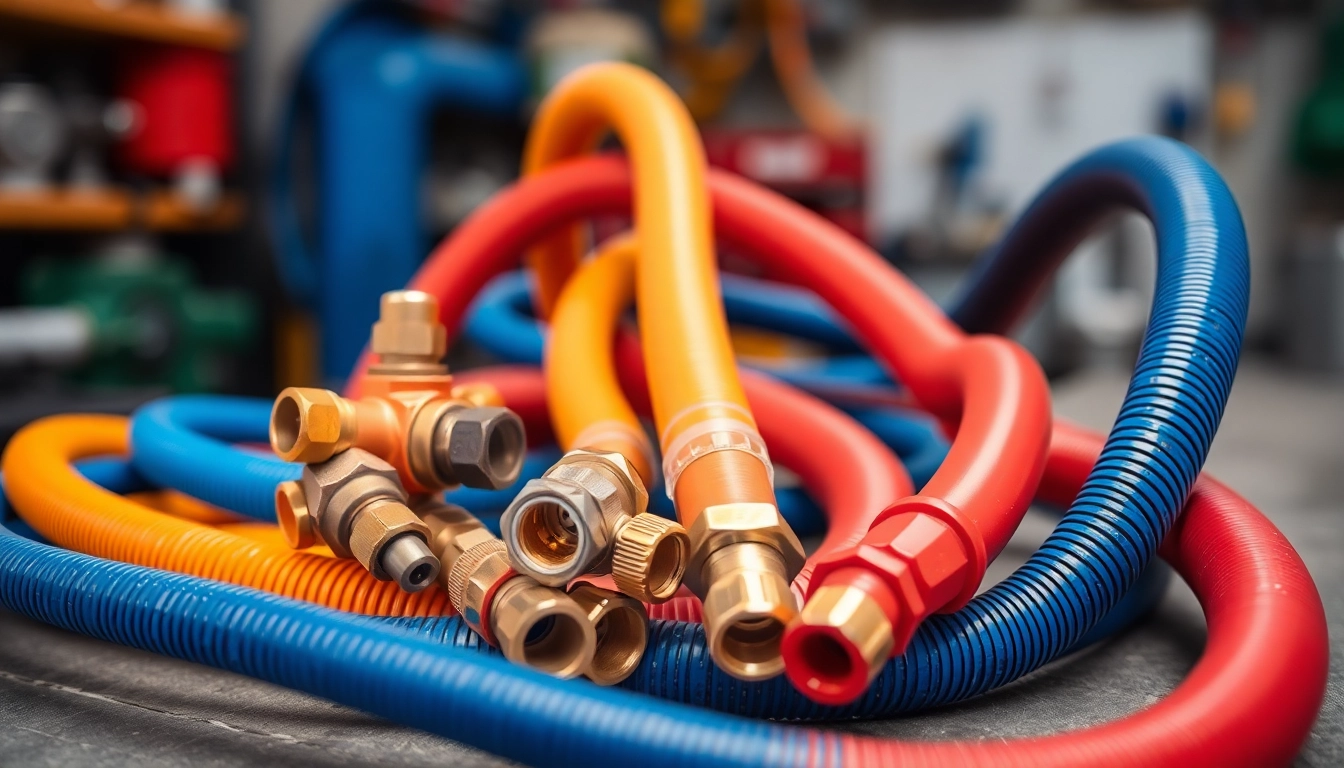Understanding Air Hoses and Fittings
Air hoses and fittings are essential components in various pneumatic systems, particularly in workshops, construction sites, and automotive applications. The functionality of these systems heavily relies on the quality and compatibility of the hoses and fittings used. The right selection can enhance performance and prolong the lifespan of your tools and machinery. For anyone looking to invest in top-quality air hoses and fittings, understanding the intricacies behind these components is crucial.
What Are Air Hoses?
Air hoses are flexible tubes designed to transport compressed air from an air compressor to pneumatic tools or other vessels. They play a pivotal role in ensuring efficient transfer of air. Made from various materials, air hoses come in an array of sizes and pressures, tailored to meet the demands of different applications.
The Importance of Fittings in Air Systems
Fittings are equally important in pneumatic systems, serving as connectors between hoses and tools. They ensure airtight connections, preventing leaks that could lead to inefficiency or hazardous situations. The choice of fitting also affects the speed of air transfer and the overall performance of the system.
Common Applications and Uses
Air hoses and fittings are ubiquitous in various applications, including:
- Automotive Maintenance: Used to operate air tools like impact wrenches and tire inflators.
- Construction Sites: Essential for pneumatic nailers and other air-powered tools.
- Industrial Settings: Facilitate tasks in factories, especially in assembly lines and manufacturing units.
Types of Air Hoses and Fittings
Material Varieties: Rubber vs. Polyurethane
When it comes to air hoses, two materials are most commonly used: rubber and polyurethane. Rubber hoses are known for their durability and resistance to wear and tear, making them suitable for high-pressure applications. On the other hand, polyurethane hoses are lighter, more flexible, and resistant to kinking, which makes them ideal for lightweight tasks or scenarios where mobility is essential.
Coupler Types and Their Functions
Air hose couplers come in various types, each designed to serve specific functions. Common types include:
- Quick Disconnect Couplers: Allow for fast connection and disconnection of tools without the need for tools.
- Threaded Couplers: Provide a secure connection but typically require tools for installation and removal.
- Barbed Couplers: Used for low-pressure applications, where the hose is pushed onto a barb fitting.
Choosing the Right Size and Pressure Ratings
Selecting air hoses and fittings based on size and pressure ratings is critical. The size determines the airflow rate and pressure drop, while pressure ratings ensure that the hose can withstand the operational conditions without rupturing. Generally, for standard pneumatic applications, 1/4 inch is a common size, but it’s essential to assess your specific requirements carefully.
Benefits of High-Quality Air Hose Systems
Improved Performance and Reliability
High-quality air hose systems significantly enhance performance by providing a steady flow of air to tools. Reliable fittings prevent air leaks, which can lead to pressure losses and affect the tool’s effectiveness. This reliability is crucial for professionals who rely on these tools for precision tasks.
Cost-Effectiveness Over Time
Investing in quality air hoses and fittings may seem like a significant upfront cost, but over time, they prove to be cost-effective. Durable hose materials resist wear and tear, resulting in fewer replacements and repairs. Additionally, the enhanced efficiency and performance can lead to reduced energy costs.
Safety Considerations When Using Air Tools
Safety is paramount when working with pneumatic tools. Using high-quality hoses and fittings helps mitigate risks like hose bursts or leaks, protecting workers from injuries. Regular inspections and maintenance are also essential practices to ensure safety standards.
Common Challenges with Air Hoses and Fittings
Identifying Leaks and Repairs
Leaks can significantly impair the functionality of air hose systems. Identifying the source is crucial. Common signs include a hissing sound or reduced air pressure at the tool. To repair a leak, first, turn off the air supply, then inspect connections, fittings, and the hose for visible damage.
Dealing with Kinks and Twists in Hoses
Kinks and twists can restrict airflow and lead to damage. To prevent this, ensure proper storage of hoses when not in use. Using hose reels or racks can help avoid kinking. If a kink does occur, gently straighten the hose and allow it to relax before using it again.
Maintenance Tips for Longevity
Maintaining air hoses and fittings involves regular inspections for wear and tear, cleaning fittings to prevent debris buildup, and ensuring proper storage practices. Keeping hoses out of direct sunlight and extreme temperatures can also extend their lifespan.
Where to Buy Air Hoses and Fittings
Top Retailers and Online Stores
There are numerous retailers and online stores where quality air hoses and fittings can be purchased. Notable options include:
- Home Depot: Offers a wide range of air hoses and fittings for all types of projects.
- Lowes: Known for a variety of air compressor parts and accessories.
- Northern Tool: Provides industrial-grade hoses and fittings, ideal for contractors.
What to Look for When Shopping
When purchasing air hoses and fittings, consider the following elements:
- Material Quality: Ensure that hoses are made from durable materials suited to your applications.
- Compatibility: Check that the fittings match your tools and air compressor specifications.
- Brand Reputation: Opt for well-known brands that have positive reviews regarding their products.
Getting the Best Value for Your Investment
To get the best value, compare prices across different retailers while considering quality. Looking for warranties or guarantees can also provide additional security for your investment in air hoses and fittings.



